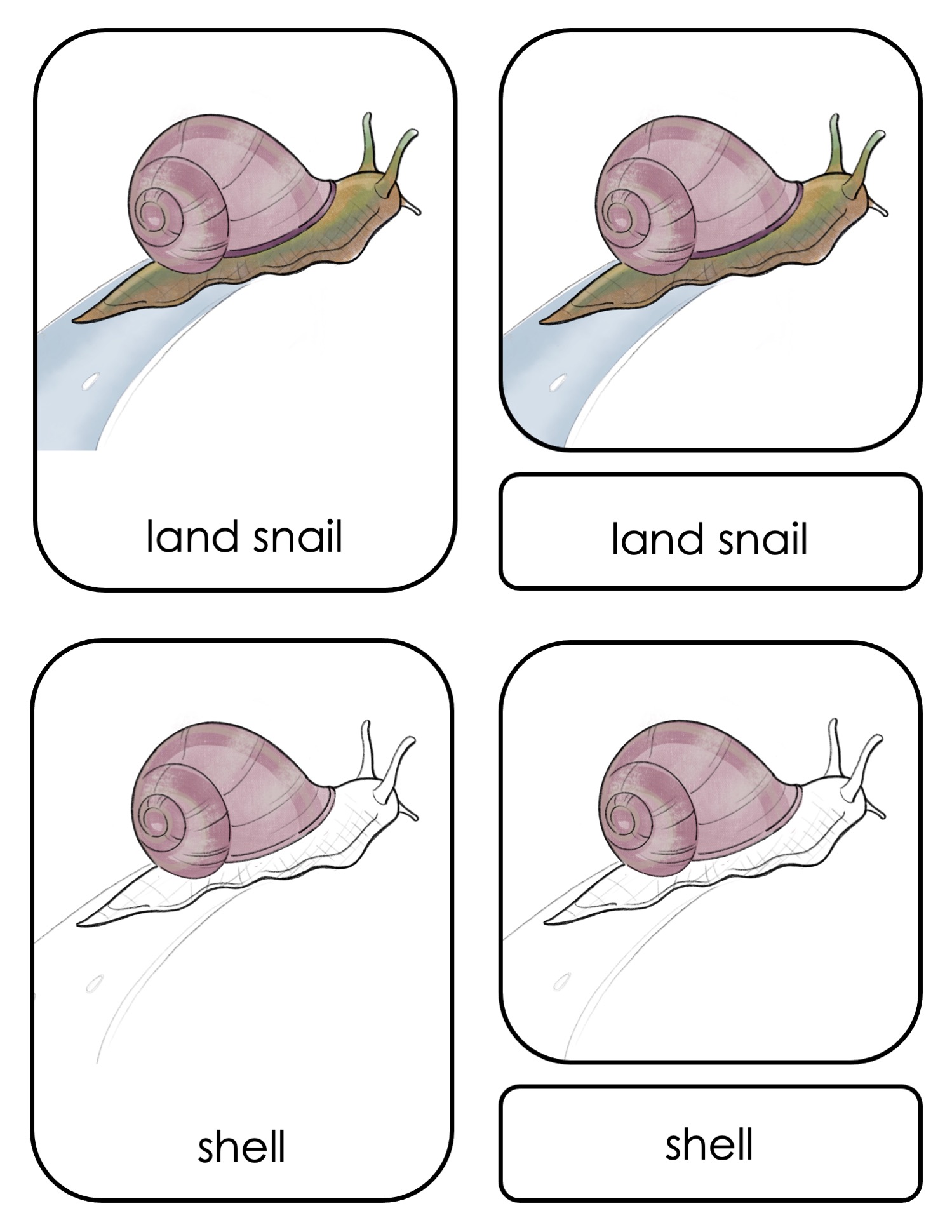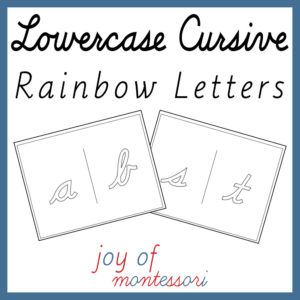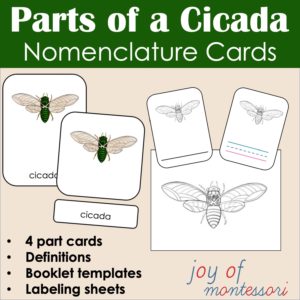Description
Teaching About Snail Anatomy
The common land or garden snail can usually be found in gardens or other areas with lots of plant life. It’s perfect for a unit of study on living or non-living, vertebrates or invertebrates, earth science, gardening, and more.
Teach your students fun snail facts such as:
- Snails have blue blood.
- Snails can easily glide over sharp objects like razor blades or broken glass without getting hurt!
These Montessori nomenclature cards can be used to introduce the parts of a snail, use the 3 period lesson, play matching games, memory, creating booklets, use as part of a research project.
Learning goals
- learn parts of a snail and their functions,
- build vocabulary
- Visual matching skills
- print letter formation
- fine motor development through writing and/or coloring
- exploring science concepts & the natural world
-
Children enjoy learning about the natural world and snails can often be found in gardens
-
Children love to label, color, and create booklets – this work provides variety in the classroom for these skills.
-
Customize your lessons for students aged 3-9 in the early childhood or lower elementary classroom.
-
Nomenclature cards are appropriate for all children in the 3-6 classroom and it is up to each teacher’s discretion how many cards and what level a particular child is ready for. The beauty of this work is that it can be modified and adapted to every age level by increasing the skills and difficulty to complete the work. High repetition increases retention, as long as the teacher makes the repetition interesting and engaging to the child.
-
Based on the child’s needs and skill level, consider limiting the number of cards presented. Include more cards and definition cards for children interested in more information as able.
-
Observe the child’s ability to recall the names of the parts, and then introduce matching images and words.
-
Note any areas in which a child is struggling or needs guidance and plan to adjust and re-present the work at another time.





Reviews
There are no reviews yet.